|
|
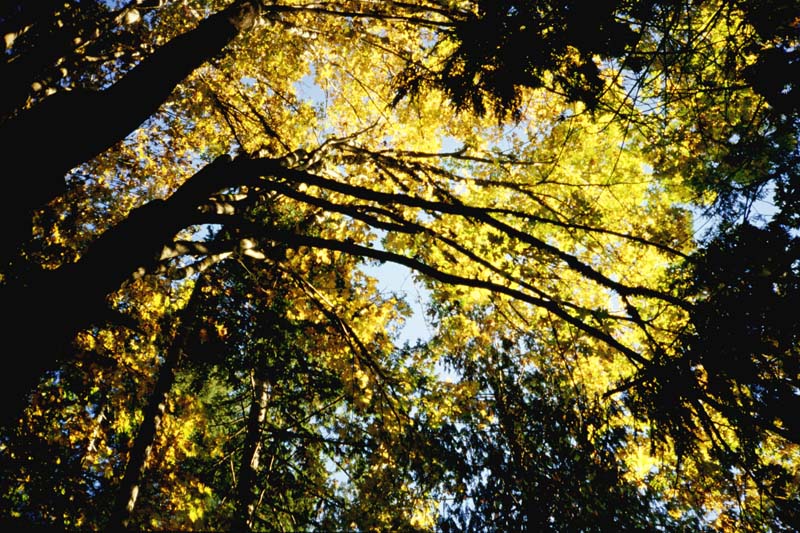
maples, Cortes Island, B.C.
Autumn has settled onto this mossy island and the massive maples have taken on the golden hue of the mythical Mallorn-trees of Tolkein’s Lothlorein. But as in Middle Earth, the calm of the forest in which I find myself has an unsettled, internecine quality, as the distant thrumming of the massing, apocalyptic armies becomes ever more palpable. Activists, astrologers, political pundits, climatologists and zoologists all seem to agree that we are at some sort of historical cusp, with the bifurcation point being the upcoming American election.
Of course, like everyone else, I have been engrossed in the minutiae of “the debates” and wondering whether Bush has finally been completely transformed into one of the supermarionetic Thunderbirds I so loved watching as a child. The theories around Bush’s “wire” have been all over the net lately, but for me the penny dropped when he appeared halfway through his first campaign with a large Band-Aid on his cheek and suddenly started speaking more coherently, albeit with an unsettling kind of parsed pacing, as if he had to wait for a download between phrases. Some sort of audio transducer implanted into his maxillary bone seems to make the most sense to me. Since then, my question has always been: “Why *wouldn’t* Bush be wired?” I mean, could the plutocrats at the helm of the world’s only superpower actually leave the operation of Bush’s mouth to chance? Not likely. In fact, Bush is the perfect subject for this kind of augmentation; his naturally dazed and hypnotic expression and apparent absence of intellectual capacity would make his brain/mouth connection a pretty easy hack.
I’ve been outside a lot lately, since returning from New York, stratifying the seeds of the exquisite Davidia involucrata or Dove Tree and the Caucasian Wingnut, which I collected at the Brooklyn Botanical Gardens. Far overhead, across the great blue vault of oceanic sky, skeins of wild geese stream southward just beneath the endlessly forming and disintegrating grid of contrails left by the trans-Pacific jetliners, ferrying their cargos of bleary-eyed passengers back and forth across the date line. An idyllic autumnal image to be sure, but NASA has reported that contrails contribute noticeably to global warming, by increasing the amount of cirrus clouds in the upper atmosphere. Even the beloved croaking of tree frogs that (for now) still echoes through these damp woods is no longer to be taken for granted. Global amphibian populations are in free fall and nobody seems to have a clue as to why. There are the usual perplexed mutterings about “the canaries in the coal mine” but frogs are going extinct, even in protected areas, which have up till now been thought to be relatively pristine. Maybe frogs can look into the future and are burrowing towards the centre of the earth because they see what’s coming. They can, after all, predict the weather. . . Scientists are similarly bewildered by what the Guardian calls an “unexplained and unprecedented rise in carbon dioxide in the atmosphere two years running”, which may mean that instead of having decades to bring global warming under control, we have only a few more years. The nightmare scenario is that this is the first sign of the breakdown in the Earth’s natural systems for absorbing CO2, leading to the dreaded “runaway greenhouse effect” and total climate meltdown.
Creatures everywhere seem to be scurrying for cover, even ones that haven’t been discovered yet. There has recently been a spate of reporting on sightings of new humanoids, which although long existing in the realms of myth and crypto-zoology, are now proving to be scientifically plausible. The BBC reports on a new species of two-metre tall great ape sighted in the north of the Democratic Republic of Congo, which according to local villagers is “ferocious, and even capable of killing lions.” It clearly doesn’t want to be found. In Sumatra, there is fresh evidence supporting claims of the existence of the orang pendek, another as yet undiscovered species of hominid ape (or person?), said by the islanders to “walk like a man.” Whether or not these mysterious apes, yetis and sasquatches ever are proven to be walking this earth in our time, there is something sad about the fact that under the present onslaught of massive deforestation and climate change, the habitat that it would take to support them, will soon no longer exist. Much of the magic in these creatures lies in the fact that they haven’t been found by us and, real or imagined, the fact that they might exist, implies that somewhere there is still a nature big enough for them to hide in.
Perhaps these fleeting glimpses of hairy bipeds are really manifestations of our own deep longing for an ecological innocence that we have long ago lost, -a kinder, simpler more feral version of ourselves, reminiscent of the mysterious, mediaeval, heraldic figure of the “green man”, still living invisibly somewhere in the wildernesses of our own minds, gazing incredulously out at the carnage wrought by his future self.
Yet within this maelstrom of ecological destruction there are signs of hope. In Australia, hundreds of people are queuing up to view the putrid flower of the suggestively named Amorphophallus titanum, or titan arum, which at full bloom is said to smell like a large rotting corpse. Hooray! Anomophilia is alive and well, at least in the Antipodes. The Guardian is reporting that Chernobyl’s now flourishing ecosystems have prompted the UN to suggest that the area be developed as a nature reserve and ecotourism destination -albeit one with an unpredictable future, as experiments using fruit flies exposed to the blast have shown the problems of genetic mutation don’t emerge until the 26th generation. Maybe one day tourists to the site will thrill to the sight Cerberus-like wolves howling at a sallow Ukranian moon with multiple heads, or perhaps bio-luminescent wild boars rooting through the verdant new Elysian fields blanketing the ruins of Chernobyl’s now picturesque sarcophagus. Down in Mexico, the olive ridley is bucking the trend of world-wide sea turtle extinction, thanks to the armed guards now stationed on its nesting beaches -no doubt delighting the rich white tourists who flock there to commune with ‘authentic’ nature.
As an escape from the psychogeography of despair, and to address an overwhelming urge I’ve always had to fix stuff, I have, over the past decades, engaged in what could arguably be called a kind of ecological Situationism. The folks over at Flickr have made it possible for me to start putting the documentation of some of these ‘botanical interventions’ on-line, in a simple accessible format. So far, I’ve uploaded slide shows of my “Healing the Cut – Bridging the Gap” land art project as well as a history of Cottonwood Gardens, of which I was a founder and designer. Documentation of my recent “Means of Production” project can still be found here, on my plone site, but I will set up a Flickr slide show of this shortly.
Oh, and I am *so* pleased to see Laura Trippi as well as William Gibson blogging again, both after a long hiatus. Says Gibson, quoting the Spanish philosopher Miguel de Unamuno
— “At times, to be silent is to lie.”
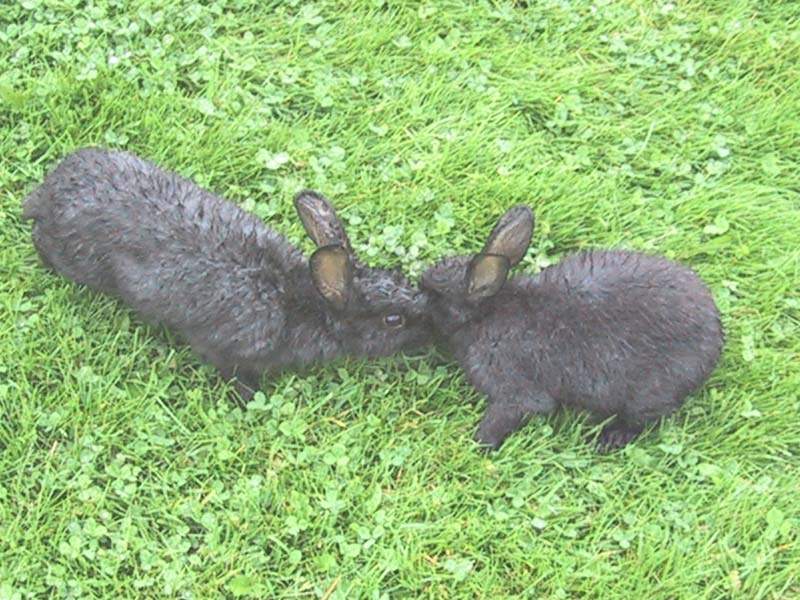
bunnies, Victoria B.C.
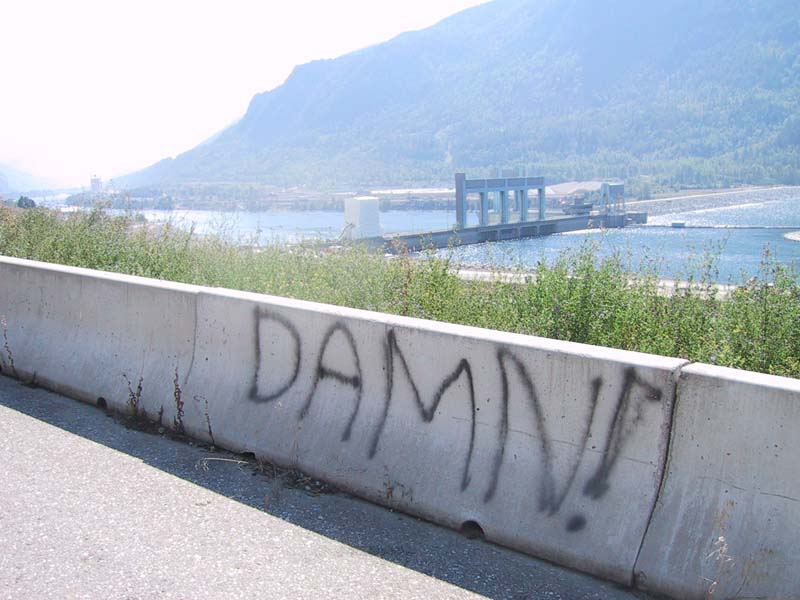
dam(n), near Castlegar, B.C.
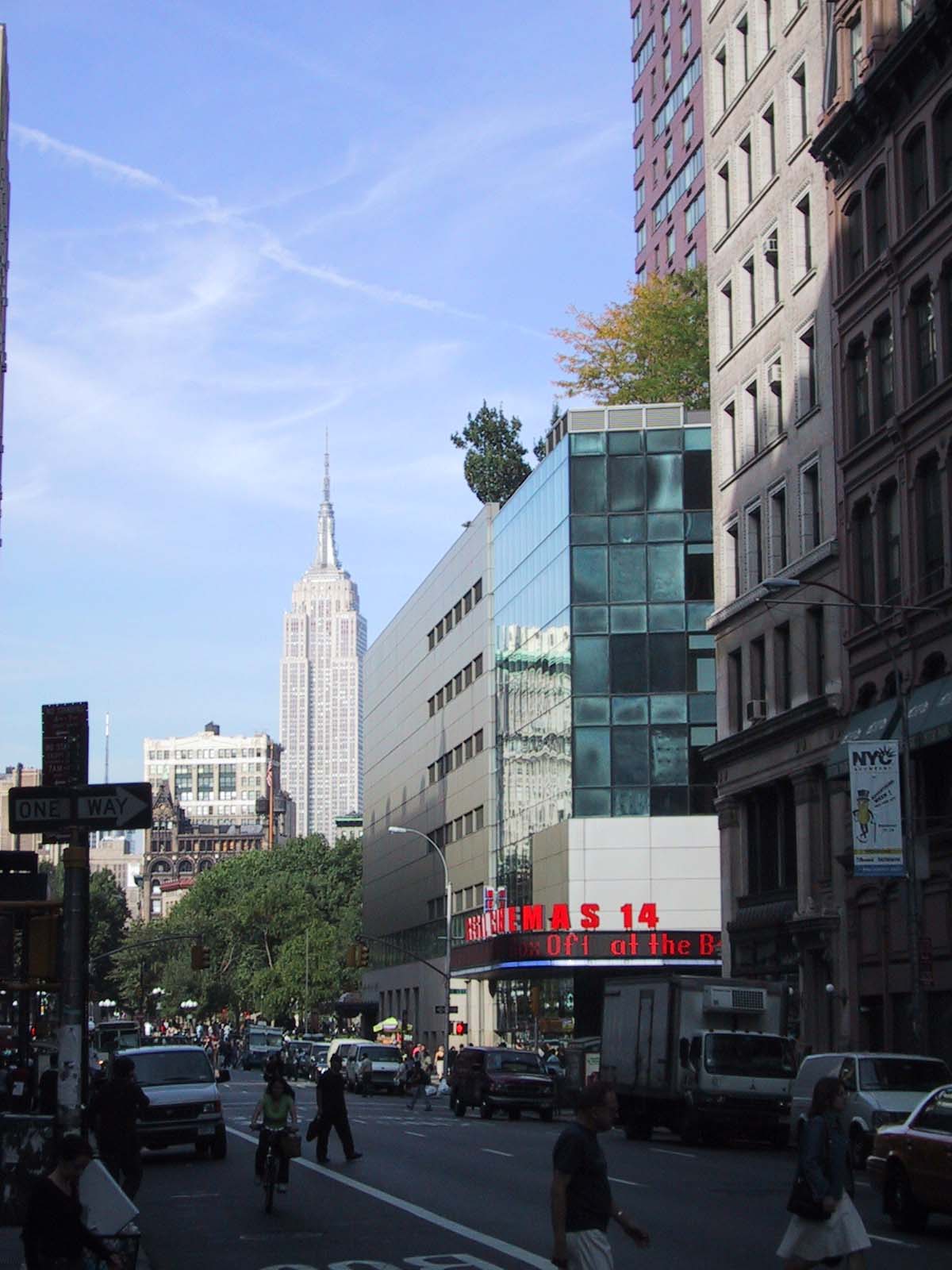
Back in Nuevo York
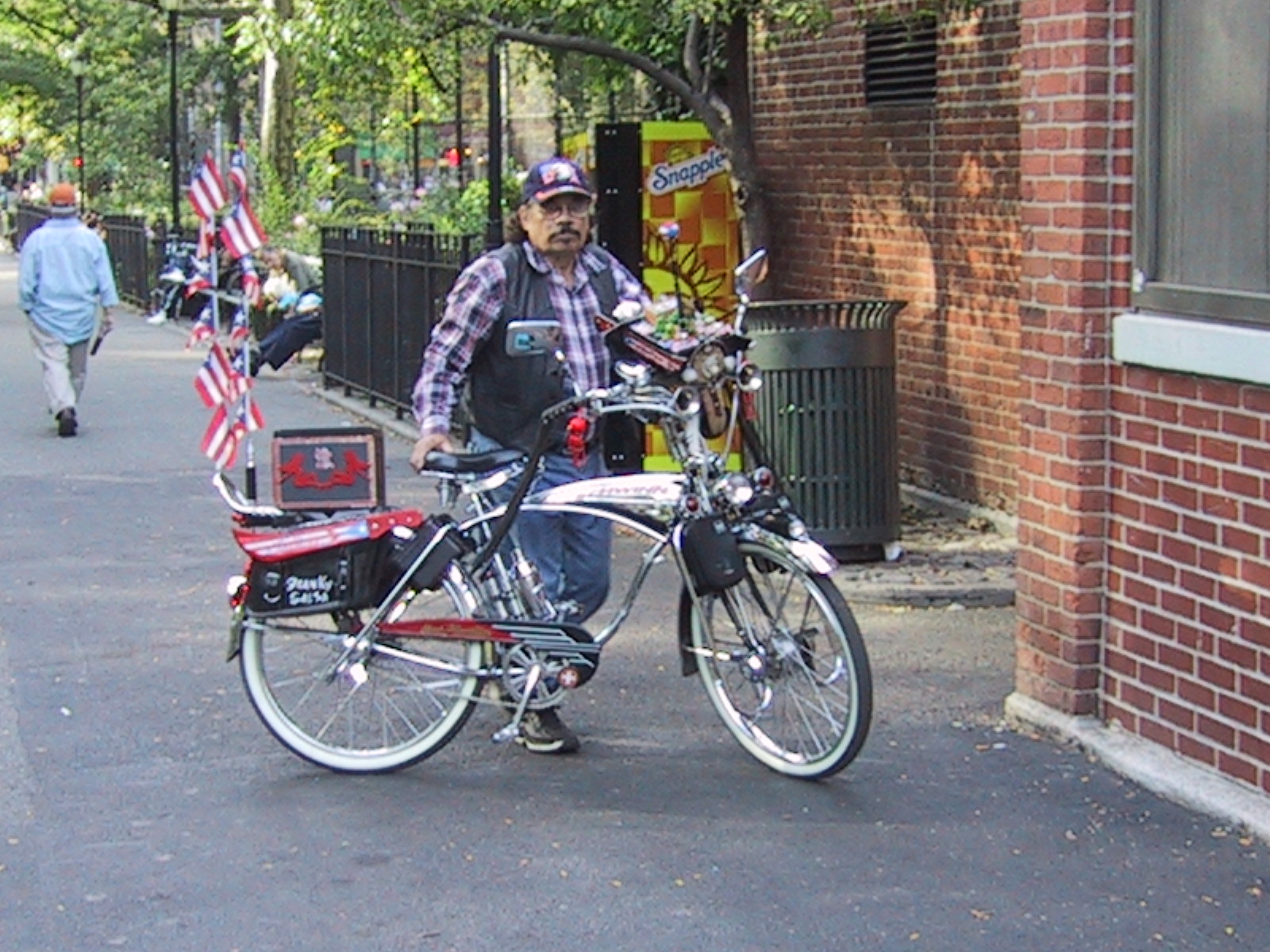
Loisida Ambassador

Mosaic Man was here
Dropped from the Sky:
Once again, I find myself on a flight hurtling toward old New York. The plane casts a fleeting shadow across the silver, flocculent tops of billowing thunderheads. They float like gargantuan jellyfish above the parched prairie below, raking the vast continental airscapes with flashing tentacles of lightning.
As the roiling autumnal sky slowly succumbs to the oncoming Atlantic evening, the number of twinkling lights on the ground inexorably increases until pure blackness almost disappears, replaced now by the great blinding orange galaxy of the North-eastern megalopolis of which New York City is the luminous, seething hub.
Descending through the swirling night into JFK, I become saturated with the feeling that America, that great doughy and demanding child of the Enlightenment, has become senescent. Its baby flesh has degenerated into sheets of yellow fat and dimpled cellulite. Manhattan, the nation’s inverted belly button, is sticking out into the air again, newly hopeful yet still frighteningly vulnerable to another errant bolt from the blue.
And that would be a shame. On my journeys here since 9/11, I have found that New York has managed to retain its ebullience and unstoppable proteanism. It continues to be an engine of surprise and delight; constantly reinventing itself by absorbing talent into its vast sucking eye, iconic yet aloof to the parochial and inbred American hinterland that at once adores it and despises it.
But 9/11 was indeed a serious blow. Without the looming machine-like Twin Towers of the World Trade Centre, the Manhattan skyline seems deeply diminished–knocked back to an earlier architectural epoch–a sort of fossilized reef of outdated early 20th century ideas. The stone and steel towers of the Empire State Building and the Chrysler Building look so old now, mute monuments to the forgotten captains of industry who once glowered down from them at the hopeful masses boiling through still innocent streets. But too much time has passed. It feels as if Manhattan’s skyscraper capitalism has entered its Cretaceous era–mutated, corrupted and riddled by its own history, ready to be laid waste by the first errant asteroid to be nudged from its orbit.
The super shuttle ride into Manhattan from JFK was (as usual) exhaustingly epic. I was sandwiched into the back of the van with some boisterous Australian ladies and a deeply demented family of logorrheic Dutch people that found it necessary to opine loudly on all matter of banality, including the ubiquitous Duayne Reade Drugstore chain; “Look a Dvane Arreed Droog stor, open tventifor Hooours !” The ride seemed like an eternity, a punishment for an unforgivable sin I might have committed in a past life. Due to the oversupply of passengers and luggage, my head was jammed against the window as if I was an insect specimen mounted under museum glass. At the same time my spine was being pummeled by a seemingly endless array of arrhythmically placed potholes, unmediated by the slightest hint of a suspension system, which would have concussed me against the van’s ceiling, had I not ratcheted up my seatbelt. Despite my crankiness, the rest of the overcrowded van’s passengers (first time visitors to New York) were obviously enthralled by the spectacle of driving into Manhattan’s magnificent, electrified maw at night. They gasped at their first glimpses of the skyline’s iconic buildings and the network of massive, light festooned suspension bridges that funnel the endless streams of traffic into the city core. Times Square’s hyperbolic lightscapes elicited squeals of delight, as did even the manhole covers emitting steam from the city’s streets.
Clearly, Manhattan could still be enchanting and (once again) I had to admit to myself that I, also, feel a kind of frisson whenever coming here, despite my increasingly deep misgivings about America and its hegemonic future. New York City, *is* after all so much part of the cultural memory of the planet that Modernity itself seems kind of unimaginable without it. So, I resolved, for the time being anyway, to leave my party-pooper negativity at the door of the van and to engage in the collective hallucination for a while, just to see what would happen. Finally, I arrived at Ruth’s place in the East Village and after being presented with a fascinating exposition on why I should have taken a taxi, I finally was able to settle in.
The Lions of St. Marks:
Despite the distasteful, hyper-gentrification that has hit the Loisida, a few things have thankfully remained the same. I was delighted to see Mosaic Man still plying his trade (despite his rumoured departure from the neighbourhood), this time encrusting a lamp standard near Astor Place with his signature neo-rococo tilings,. The Puerto Rican bike guys still engage in their happy processions through Tompkins Square Park on flag-festooned Schwinns, blasting the transistorized salsa music from their beloved Borinque, into the cosseting verdant canopy of the overarching elms. Up above St. Mark’s Place, the winged lions still stare down from the friezes with stony trepidation at the pullulating throngs on the street, as if ready to fly back to Venice and report to their patron saint their anxious tidings of a strange New World.
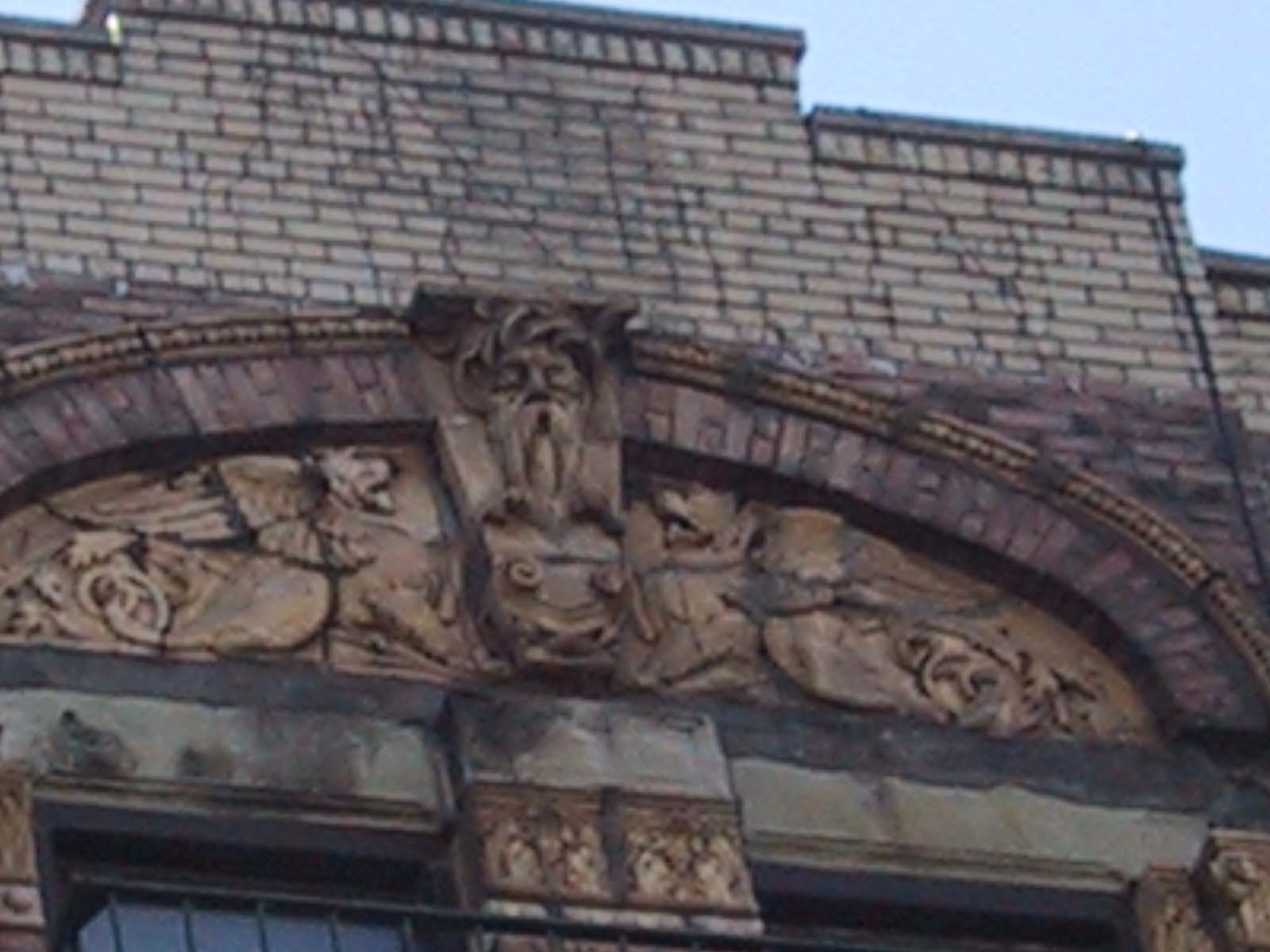 |
|
Winged lions over St. Mark’s Place
|
Beyond 7:
Although this was to be a working trip, I managed to extricate some time to hop the Number 7 train to Queens and see the last exhibition scheduled at MoMA, before the institution was to magically weigh anchor and float back to its newly renovated Manhattan home. I am so glad I made the trip out there to see the exquisite works of Lee Bontecou, an artist of whom I had up till now been woefully unaware. The exhibition started out with a number of untitled constructions from the 1950’s and 60’s resembling singularly yonic, inverted “holes” (rather like the individual cells of paper wasp nests or the tube-like structures exuded by undersea thermal vents), fabricated from wire, velveteen and bits of khaki-coloured army surplus ephemera. Some of these pieces were kitted out with leering rapacious teeth made from saw blades, conferring upon them a grim, shark-like aesthetic. Further on in the display, I found myself simply *blown away* by Bontecou’s whimsical vacuum-formed plastic plant forms and coelocanth-like deep sea fishes, that seemed inspired by the lovely hand blown glass plankton models and dioramas of deep sea creatures displayed at the American Museum of Natural History. The show finished with Bontacou’s bizarre, spidery, space ship constructions which looked as if they had just floated off the cover of Samuel Delaney’s Dahlgren.
The companion exhibit to Bontecou’s, called Tall Buildings, took the form of an intriguing display of architectual models of skyscrapers, (proposed and actually built) from all over the planet. This show actually managed to convey a sense of optimism, euphoria and jouissance about the imagining of innovative new tall buildings, that has largely been lost since 9/11 in New York City, exacerbated in particular by the grotesque indignities and compromise-riddled architectural bottom-feeding that has so tainted the re-development of the Ground Zero site. Standing out in the show, were several buildings proposed for construction in Asia, a continent where there appears to be not the slightest reticence to taking architecture to truly hyperbolic levels. Seoul’s Togok (XL Towers) and Hong Kong’s Kowloon Towers are cases in point, (be sure and take the little on-line *flash tours* of the buildings here to see what I mean.) These are absolutely titanic structures almost 500 metres in height that seem to flaunt the forces of physics and terrorism, yet to me they have an almost crystalline charm. The Togok XL Towers even incorporate their own temple. The most endearing objects in the whole Tall Buildings exhibit were surely a series of child-like, cobbled-together little models of tin, fly screening and bits of plastic made by Frank Gehry as studies for his (unbuilt) New York Times Building which, had it been completed, would have looked more or less like a giant melted popsicle. The proposal that was finally selected by the Times is sadly, an extremely conventional monstrosity designed by Renzo Plano, who describes its architectural value proposition as (yawn) “a simple rectangle reflecting Manhattan’s grid.” What a missed opportunity for the Times, which (had they chosen Gehry’s design) could have lightened up their rather staid and impacted corporate image. I mean, running the Times must be kind of like dealing with a melting popsicle anyway- with all that battling against time and sucking up that they do there.
Of course being in New York for any time is liable to give one heart palpitations, due to what social scientist Barry Schwartz in his recent book calls “the paradox of choice”. Seeing as I was in Queens, I just had to check out P.S.1’s latest offerings and was delighted to come across nARCHITECTS’ whimsical bamboo structure called Canopy, installed in the building’s courtyard. Bamboo has been utilized in a multiplicity of ways for millenia. But nARCHITECTS’ use of freshly cut, green bamboo as a free-form architectural medium, brings to it a freshness and contemporary quality, rarely seen. One has to appreciate bamboo’s utter amazingness. Imagine an extremely strong, light and flexible building material, with structural qualities akin to carbon fibre, that just sort of grows itself! My own groves on Cortes Island basically thrive on a steady diet of chicken manure, rotten leaves and pee, rewarding me with magnificent, useful culms, edible shoots and graceful, timeless botanical beauty.
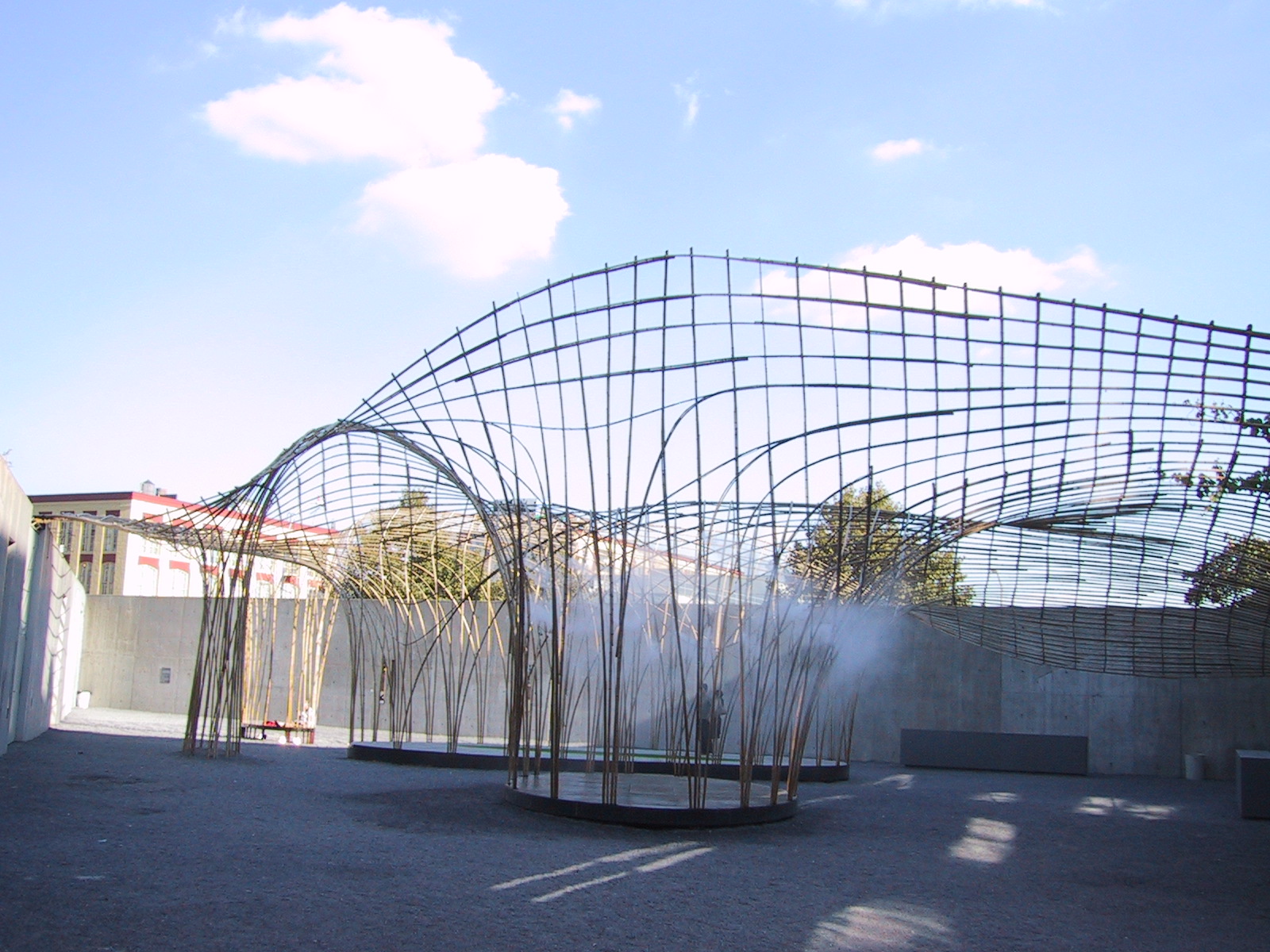 |
|
nARCHITECTS’ Canopy installation at P.S. 1
|
Inside P.S.1, was the usual hodge-podge of works by emerging artists, including the sort of obligatory and tedious porn-esque photography that continues to clog the art world lately, like so much self-absorbed, arteriosclerotic fat. Why artists still feel compelled to mine the porn genre, when it is has in and of itself become so completely mainstream and non-transgressive, is a complete mystery to me. It it *about* porn, or is it *just* porn? Perhaps the most egregious example of this, that I saw on this trip to New York, was Terry Richardson’s show at Deitch Projects, which basically consisted entirely of large photographs of him getting blowjobs from various medicated-looking sex partners. While it might have been a fun project for the artist, it left me asking myself, “Why am I wasting my time looking at pictures of what Terry Richardson’s insalubrious dick did on its summer vacation?”
Imagine my surprise when (back at P.S.1), idling through yet another catatonia-inducing multiple narrative/multiple projection video installation, I came across a blissfully non-interactive display of Chris Marker’s preparatory copybook, for his (1962) film La Jetee, which of course to me has always been ‘the perfect film.’ Laid out on a long table were all of the film’s image sequences, in the form of tiny black and white photographs along with the director’s notes. And there it was –Sequence N, Image #25–the scene that has always haunted me, where the two actors are pointing towards the cross section of an ancient sequoia tree, covered with historical dates, and the narrator says:
She pronounces an English name he doesn’t understand. As in a dream, he shows her a point beyond the tree and hears himself say, “this is where I come from,” and falls back exhausted.
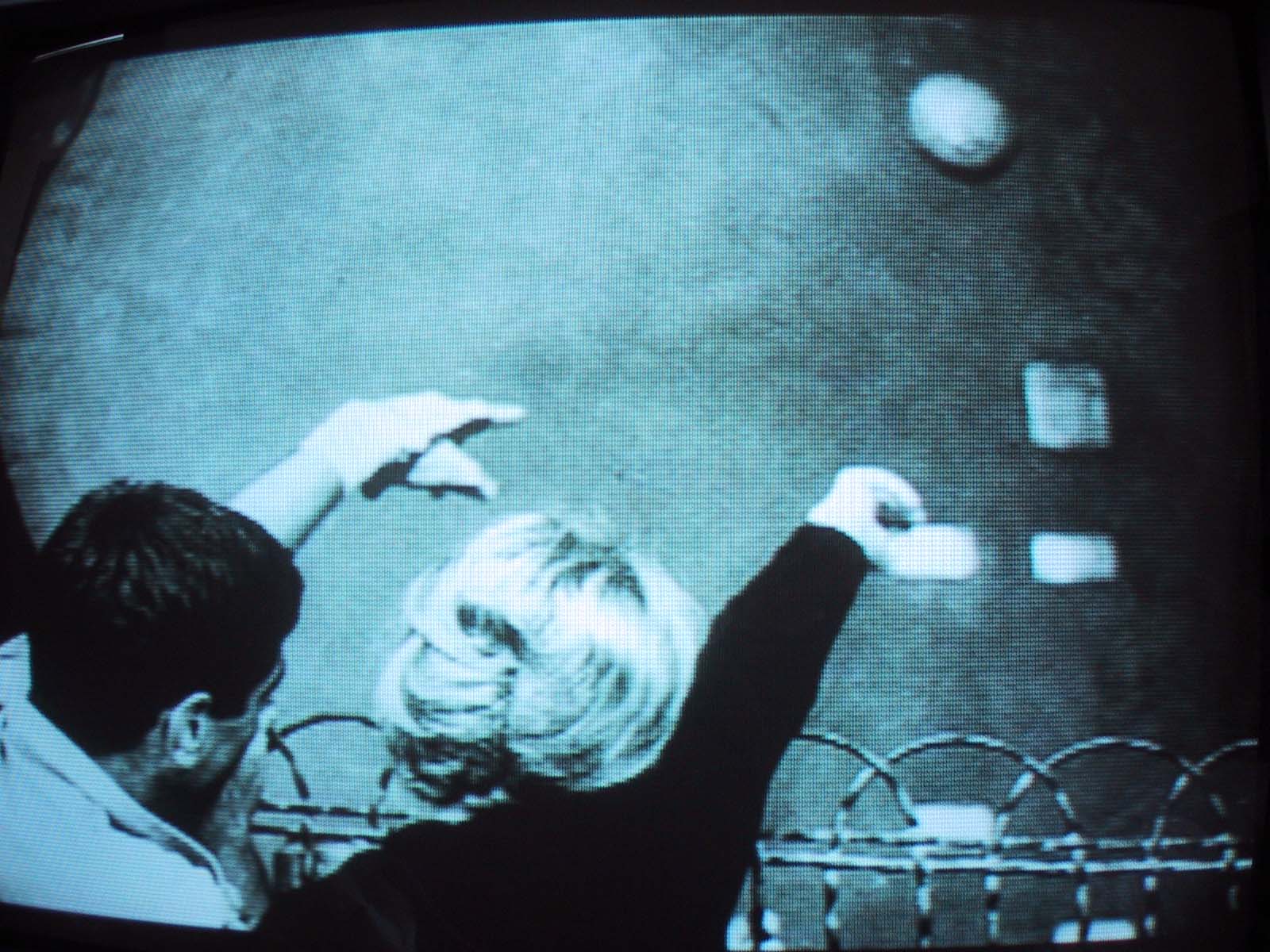
Sequoia scene in La Jetee (1962)

Ground Zero’s deleted history, (2004)
Objecthood:
In La Jetee, Marker somehow anticipated, over 40 years ago, the deconstruction of time, space and linear narrative that so characterizes contemporary network art. The Chelsea Art Museum has mounted a fascinating exhibition of this genre called The Passage of Mirage – Illusory Virtual Objects, which examines what the curators term “an expanded concept of objecthood” made possible in the virtual and interactive realms of cyberspace. There is a wonderful echo here of Marker’s use of Orly Airport as the platform for time travel in La Jetee, in the intriguing networked installation, entitled Short Films about Flying, 2003 by the duo Thomson and Craighead. In this work, the artists hack a video feed from Boston’s Logan Airport (the camera of which is controlled remotely by visitors to the webcam site) and combine these images with randomly loaded internet radio samples and text grabbed from on-line messaging boards. The resulting, narrative, montage and sound-track are all random, yet wonderfully poetic and beguiling and always completely novel. In a sense, everything and anything can and will happen in this non-dimensional state, all at the same time. Or maybe never.
|
|












